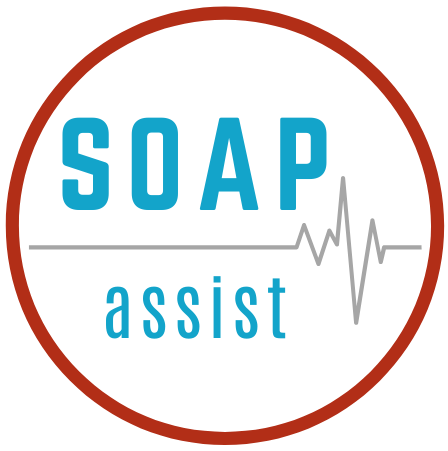The assessment and plan section of the medical SOAP note is perhaps the most important section of the SOAP note. A well-constructed assessment and plan section usually takes the longest to complete. This is where all of the data detailed in the note is summarized into a comprehensive assessment and plan. If written well, other providers typically find this section to be the most helpful. Reviewing the assessment and plan gives a quick summary of what is going on with the patient. In this article, we will discuss what goes into making a good assessment and plan.
The assessment and plan typically begins with a one-liner. This has been discussed extensively in a previous post. However, it bears repeating that the one-liner summarizes the important points already documented and implies which issues will be addressed.
When it comes to SOAP documentation, some providers are described as groupers, and others as splitters. Groupers will tend to group problems that are related, while splitters will tend to talk about problems individually. There is some amount of personal preference here. A good general rule is that a plan that addresses two problems can probably be combined. Whereas two distinct plans should probably be justified individually.
The assessment and plan itself is typically organized in one of two ways. Perhaps the most common format is problem-based organization. With this method, problems are organized according to severity/acuity. More severe and more acute problems appear first. The second way of organizing the assessment and plan is in the system-based format. With this format, problems are organized according to their associated organ system. For example, headache and facial weakness will be listed under the neurological heading. Within each organ system, problems are typically organized according to severity/acuity as well. In our example, facial weakness would likely appear first. This is because it is more specifically associated with stroke and is more concerning than headache.
The SOAP note generator on SOAPassist.com makes organization of these problems easy. Providers simply select the templates they want to use in the order they wish to appear in the SOAP note. A custom SOAP note with problems organized according to severity is instantly created. Providers can choose between the problem-based and the system-based note format. Templates are intelligently organized according to the order in which they were selected.
Most notes typically end with a few common items. One such common item is venous thromboembolism prophylaxis. These items are quality assurance measures. They are designed to ensure providers do not miss important aspects of care. They typically are used with inpatient notes. The SOAP note generator will include the commonly used quality assurance measures at the bottom of the note.
Most notes do not include references. However, references can help the reader understand which literature was utilized to make clinical decisions. SOAPassist curated templates generally include references to major trials and guidelines that many providers use to make their decisions. SOAPassist users can insert their own references into their custom templates. Upon generation of the final SOAP note, references are included in the order the templates were selected.
Ultimately, the assessment and plan section of the medical SOAP note is perhaps the most important section because it contains the most useful information for the next provider. In reviewing other providers notes, most providers skip straight to the assessment and plan. Making this section of the medical SOAP note clear and concise can be of tremendous help. In addition to speeding up documentation, templates help by nailing down important verbiage beforehand. This leaves the final SOAP note documentation clear, concise and of maximal benefit to other medical providers.
Disclaimer: SOAPassist curated templates are created for use by licensed medical providers. While they are examples of what a provider might document, their intended purpose is to provide a starting point for documentation and do not constitute medical recommendations.

